
Palm Sunday is the Christian moveable feast that falls on the Sunday before Easter. The feast commemorates Christ's triumphal entry into Jerusalem, an event mentioned in each of the four canonical Gospels. Its name originates from the palm branches waved by the crowd to greet and honor Jesus Christ as he entered the city. Palm Sunday marks the first day of Holy Week; in Western Christianity, this is the beginning of the last week of the solemn season of Lent, preceding Eastertide, while in Eastern Christianity, Holy Week commences after the conclusion of Great Lent.
Liberation theology is a theological approach emphasizing the "liberation of the oppressed". It engages in socio-economic analyses, with social concern for the poor and "political liberation for oppressed peoples" and addresses other forms of perceived inequality.

The Arecaceae is a family of perennial, flowering plants in the monocot order Arecales. Their growth form can be climbers, shrubs, tree-like and stemless plants, all commonly known as palms. It's fossil, Palmoxylon, have been around 78 million years ago. Those having a tree-like form are called palm trees. Currently, 181 genera with around 2,600 species are known, most of which are restricted to tropical and subtropical climates. Most palms are distinguished by their large, compound, evergreen leaves, known as fronds, arranged at the top of an unbranched stem, except for the Hyphaene genus, who has branched palms. However, palms exhibit an enormous diversity in physical characteristics and inhabit nearly every type of habitat within their range, from rainforests to deserts.
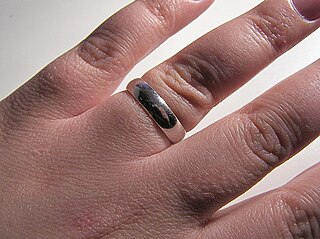
A wedding ring or wedding band is a finger ring that indicates that its wearer is married. It is usually forged from metal, traditionally gold or another precious metal. Rings were used in ancient Rome during marriage.

A wreath is an assortment of flowers, leaves, fruits, twigs, or various materials that is constructed to form a ring shape.

Making the sign of the cross, also known as blessing oneself or crossing oneself, is a ritual blessing made by members of some branches of Christianity. This blessing is made by the tracing of an upright cross or Greek cross across the body with the right hand, often accompanied by spoken or mental recitation of the Trinitarian formula: "In the name of the Father, and of the Son, and of the Holy Spirit. Amen."

A votive candle or prayer candle is a small candle, typically white or beeswax yellow, intended to be burnt as a votive offering in an act of Christian prayer, especially within the Anglican, Lutheran, and Roman Catholic Christian denominations, among others. In Christianity, votive candles are commonplace in many churches, as well as home altars, and symbolize the "prayers the worshipper is offering for him or herself, or for other people." The size of a votive candle is often two inches tall by one and a half inches diameter, although other votive candles can be significantly taller and wider. In other religions, such as Hinduism and Buddhism, similar offerings exist, which include diyas and butter lamps.
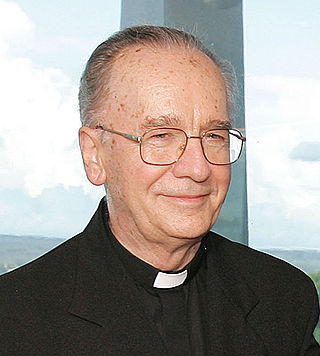
Cláudio Hummes, OFM was a Brazilian prelate of the Catholic Church. He was prefect of the Congregation for the Clergy from 2006 to 2010, having served as Archbishop of Fortaleza from 1996 to 1998 and Archbishop of São Paulo from 1998 to 2006. A member of the Order of Friars Minor and an outspoken proponent of social justice, he was made a cardinal in 2001.

A flaming chalice is the most widely used symbol of Unitarianism and Unitarian Universalism (UUism) and the official logo of the Unitarian Universalist Association (UUA) and other Unitarian and UU churches and societies.
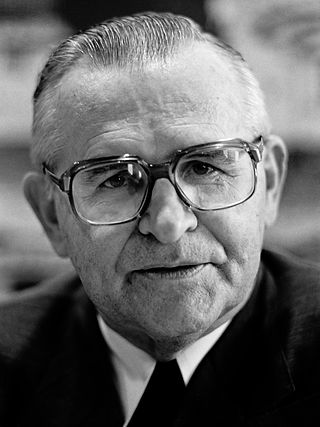
Paulo Evaristo Arns OFM was a Brazilian prelate of the Catholic Church, who was made a cardinal and the Archbishop of São Paulo by Pope Paul VI, and later became cardinal protopriest. His ministry began with a twenty-year academic career, but when charged with responsibility for the Sao Paulo Archdiocese he proved a relentless opponent of Brazil's military dictatorship and its use of torture as well as an advocate for the poor and a vocal defender of liberation theology. In his later years he openly criticized the way Pope John Paul II governed the Catholic Church through the Roman Curia and questioned his teaching on priestly celibacy and other issues.
An ecclesial base community is a relatively autonomous Christian religious group that operates according to a particular model of community, worship, and Bible study. The 1968 Medellín, Colombia, meeting of Latin American Council of Bishops played a major role in popularizing them under the name basic ecclesial communities. These are small groups, originating in the Catholic Church in Latin America, who meet to reflect upon scripture and apply its lessons to their situation.
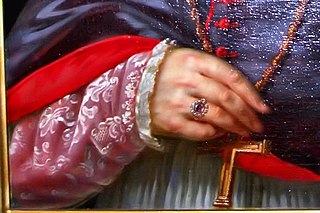
An ecclesiastical ring is a finger ring worn by clergy, such as a bishop's ring.
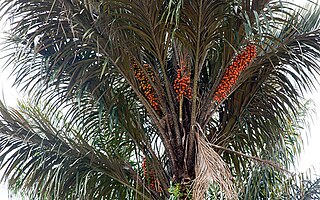
Astrocaryum vulgare is a very spiny palm native to the Guianas and the Amazon. It is a species which has greatly benefited from deforestation, as it cannot grow in undisturbed rainforest. It is common in the Pará state of Brazil, to the east of the Amazon. This plant has edible fruit.

Astrocaryum aculeatum is a palm native to tropical South America and Trinidad. It grows up to 15 m (49 ft) tall and is usually solitary. It has ascending leaves, erect inflorescence, and yellow fruit.

The palm branch, or palm frond, is a symbol of victory, triumph, peace, and eternal life originating in the ancient Near East and Mediterranean world. The palm (Phoenix) was sacred in Mesopotamian religions, and in ancient Egypt represented immortality. In Judaism, the lulav, a closed frond of the date palm is part of the festival of Sukkot. A palm branch was awarded to victorious athletes in ancient Greece, and a palm frond or the tree itself is one of the most common attributes of Victory personified in ancient Rome.
The option for the poor, or the preferential option for the poor, is a principle of Catholic social teaching, explicitly articulated in the latter half of the 20th century. The concept was first articulated within Latin American liberation theology, and was championed by many Latin American Christian democratic parties at the time. It is also a theological emphasis in Methodism.

The Catholic Church in Latin America began with the Spanish colonization of the Americas and continues up to the present day.
This article details the history of the Catholic Church in Brazil from the colonial era until the modern era. The Federative Republic of Brazil is the largest country in South America. It is the world's fifth largest country, both by geographical area and by population with over 201 million people. Catholicism is the country's predominant faith with approximately 64.6% of the population identifying as a member of the religion. Brazil has the world's largest Catholic population.

The Ticuna are an indigenous people of Brazil (36,000), Colombia (6,000), and Peru (7,000). They are the most numerous tribe in the Brazilian Amazon.
Latin American liberation theology is a synthesis of Christian theology and Marxian socio-economic analyses, that emphasizes "social concern for the poor and political liberation for oppressed peoples". Beginning in the 1960s after the Second Vatican Council, liberation theology became the political praxis of Latin American theologians such as Gustavo Gutiérrez, Leonardo Boff, and Jesuits Juan Luis Segundo and Jon Sobrino, who popularized the phrase "preferential option for the poor". It arose principally as a moral reaction to the poverty and social injustice in the region, which Cepal deemed the most unequal in the world.
















